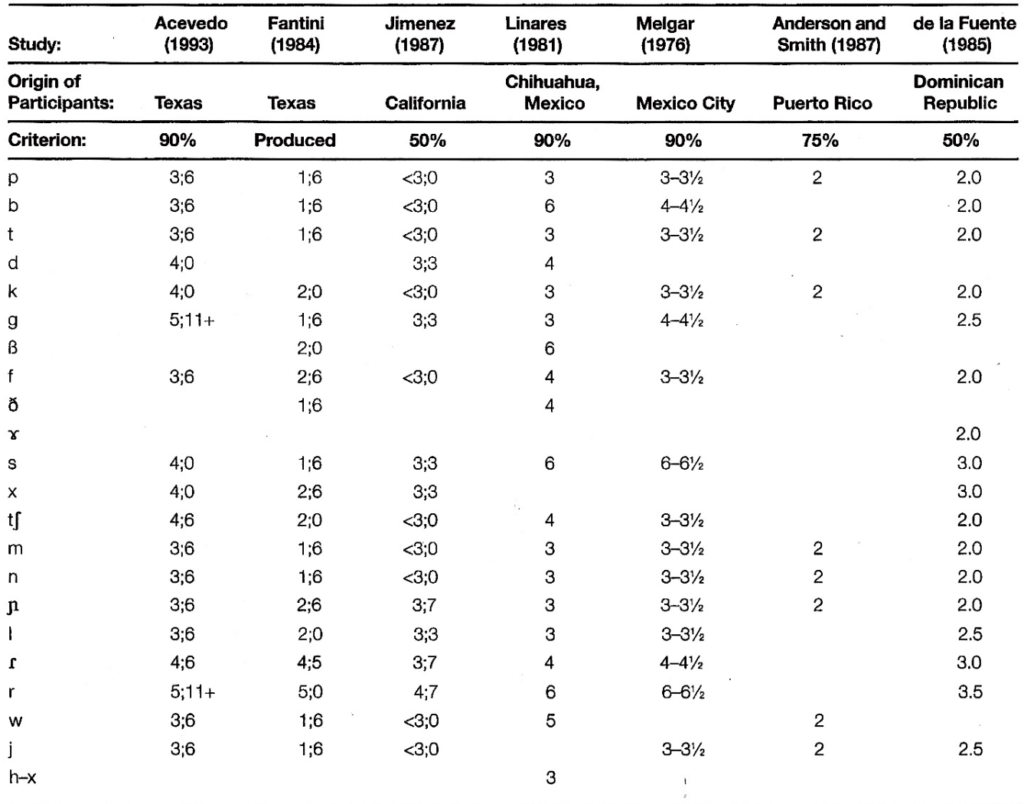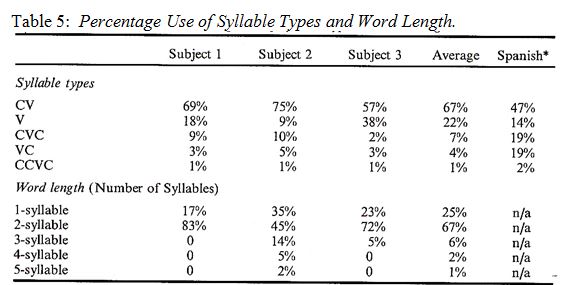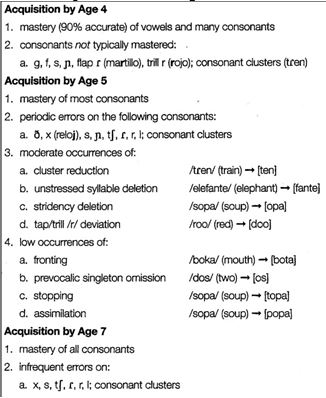Today we are going to talk about speech development in Spanish and English. We will break down this seemingly daunting topic so that you walk away feeling ready to answer any speech sound question that comes your way. You’ll learn about the acquisition of speech sounds in both languages, which speech patterns in Spanish and English are shared and which are different, and how phonological processes manifest in each language. We will also look at differences between Spanish and English in the acquisition and use of vowels and consonants, as well as differences in syllable types. So sit back, relax and enjoy this blog post!
Ladies and Gentlemen! Before we begin…
It goes without saying that regardless of the language of intervention that you use in speech therapy, you’ve come across questions about speech development differences between Spanish and English. We’re guessing that’s why you’re here right now! And you’re in the right place—in the United States alone, 10% (35 million) of the population is Hispanic, and that number is expected to double by 2030 (United States Census, 2000). In short, we ALL need this information in our tool kits.
Presenting…The phonologies of English and Spanish!
Speech development in Spanish and English has many similarities, such as a shared alphabet. Spanish is more concise in that it has 18 consonant phonemes compared to 26 in English. See the handy chart below for an illustration of Spanish phonemes.
Table 1: Spanish Phonemes
Note: From Maez (1985).
One of the most important things to know about the acquisition of these sounds is that nearly all of them are emerging by the end of four years of age. Universally, stop consonants are acquired first, followed by nasals, then fricatives and affricates, and liquids are the last sounds to appear (Goldstein & Washington, 2001). That being said, there are also allophonic or dialectal variations within either language. Spanish lacks the glottal /’/, the voiced affricate /ʤ/ (judge), the voiced /ð/ and unvoiced /θ/ (thigh, thy), the voiced /ž/ and unvoiced /ʃ/ (azure, shy), the /z/, the /ŋ/ (sing), and the flap /ɾ/ (as in butter) (Quilis, 1999). English, on the other hand, does not use the trilled /rr/ or the /ɲ/of Spanish (Quilis, 1999). When speaking strictly of sound class, order of acquisition in Spanish resembles the progression of sound acquisition per class in English. Check out the following chart depicting the results of numerous studies on the age of acquisition of sounds in Spanish:
| Table 2: Age of Acquisition of Phonemes in Spanish.Note: From Bedore (1999). |
I would like to buy a vowel, please!
The Spanish vowel space is like most Latin languages, relying on five vowels /a/,/e/,/i/,/o/and /u/. These vowels are represented in the English sound system. However, English also employs an additional eight vowels on average (13 total). A Spanish-speaker learning to speak English would be expected to create additional vowel sounds that are not native to her. In contrast, an English-speaker would be expected to compress her speech to rely on less than half of the typical number of vowels used.
Did you know?
Diphthongs exist in both languages—they are as prevalent in Spanish as they are in English. Like English, a Spanish diphthong is normally the combination of one hard vowel (/a/,/o/,/u/) and one weak vowel (/i/,/e/). The combination of two weak vowels also exists but is used less frequently (Quilis, 1999). Be aware! A lack of or excessive use of diphthongs is considered atypical in either language when taken as a whole.
Table 4: Examples of English and Spanish Diphthongs
| English | Spanish |
| [aI] price | [ja] ia, lla, ya: viaje (voyage) |
| [eI] face | [j] ie, lle, ye: pie (foot) |
| [I] choice | [j] io, llo, yo: cambio (change) |
| [ə] goat | [wa] ua: agua (water) |
| [a] mouth | [w] ue: puedo (I can) |
| [w] uo: antiguo (ancient) |
Syllable Structure and Complexity in Spanish (What a mouthful!)
The syllable structures in Spanish are highly dominated by CV sequences (Goldstein & Cintron, 1985). This is a cross-linguistic phenomenon in babbling (MacNeilage, Davis, Kinney, & Matyear, 2000), but Spanish retains the CV dominated syllable type (Quilis, 1999). The second most common syllable type is isolated vowels (18%), followed by syllables ending with consonants as the least common (e.g., CVC, VC, CCVC) (Goldstein & Cintron, 1985). In one study, a whopping 83% of the words created by Spanish-speaking children were comprised of two syllables (Goldstein & Cintron, 2001)!
Note: From Goldstein & Cintron (2001).
And now, what you’ve all been waiting for: Phonological processes!
As we all know, phonological processes are speech pattern regularities occurring during the normal course of development (Goldstein, 1999). Spanish and English share similarities in how phonological processes present in early acquisition (Mann & Hodson, 1994). In both languages, we hear phonological processes in early speech productions and these decrease in frequency as the child gets older (Anderson & Smith, 1987). The most common processes that are shared between languages are cluster reduction, pre- and post-vocalic singleton omission, unstressed syllable deletion, and glottalization of velars (Mann & Hodson, 1994). While researchers have found some differences in the frequency of each process (Mann & Hodson, 1994), the use of processes tended to decrease as the child approached five years of age (Maez, 1985). Below is a handy chart illustrating phonological processes in Spanish:
Table 6: Spanish Phonological Processes
Note: From Goldstein (1999).
But wait! It’s not THAT simple!
While both languages share the presence of phonological processes, differences exist in how they are employed (Goldstein & Cintron, 2001). Substitutions in English occur most often when liquids (/l/,/r/) are replaced by glides (/j/,/w/) (Goldstein & Cintron, 2001). In Spanish however, /r/ is more commonly replaced by /l/ (Anderson & Smith, 1987). Cluster reduction in English normally retains the first consonant of the cluster (pow for plow). In contrast, Spanish deletes the first consonant (lojo for flojo) (Goldstein & Cintron, 2001).
We leave you with one final and important word…
An understanding of typical development is necessary in order to identify a disorder (Mann & Hodson, 1994). While English and Spanish share many phonological tendencies (Goldstein & Iglesias, 1996), there are enough phonological differences to warrant a closer look at a Spanish-speaking child’s processes in both languages. Accounting for patterns specific to Spanish ensures that phonological differences reflecting the individual’s limited proficiency in English are not viewed as a disorder. And that’s something to applaud.
Speech Development in Spanish and English Resources
Include Appendices A-C, Activity 1








